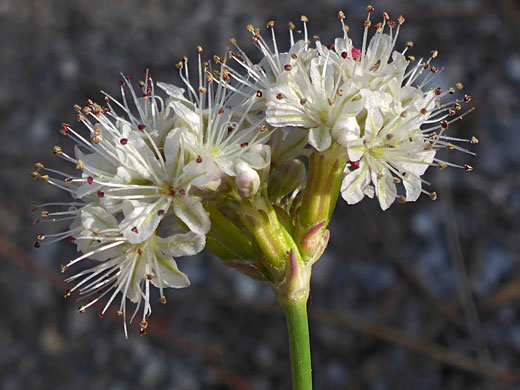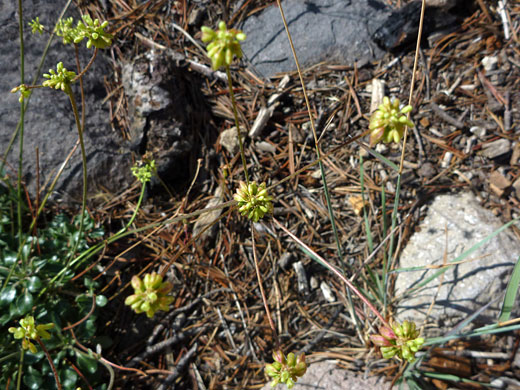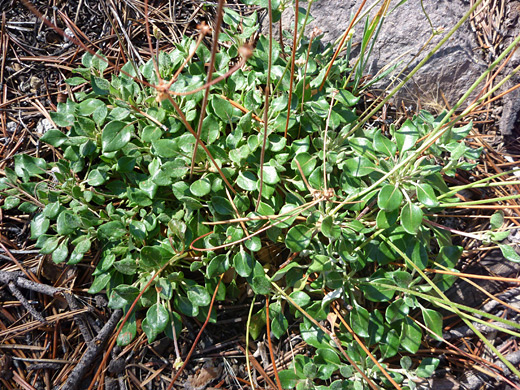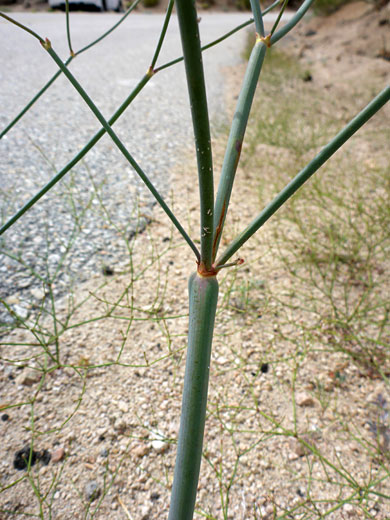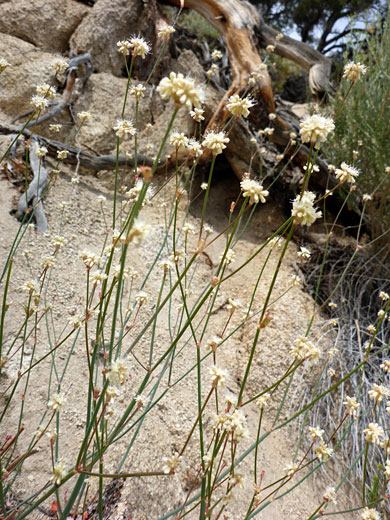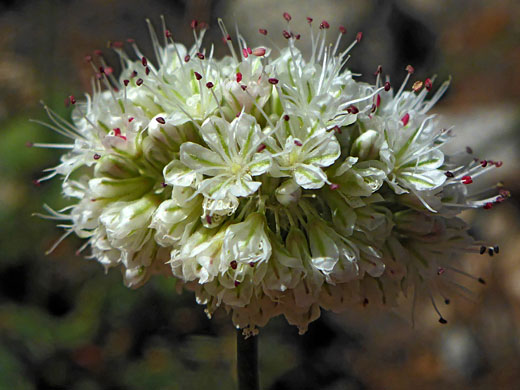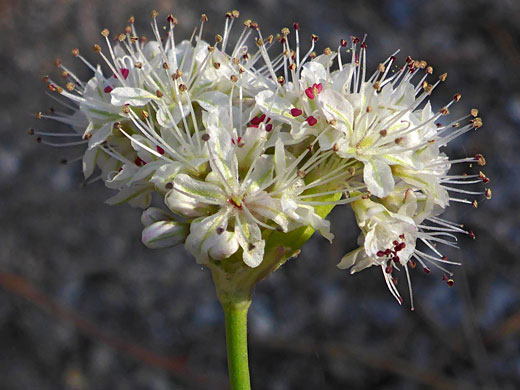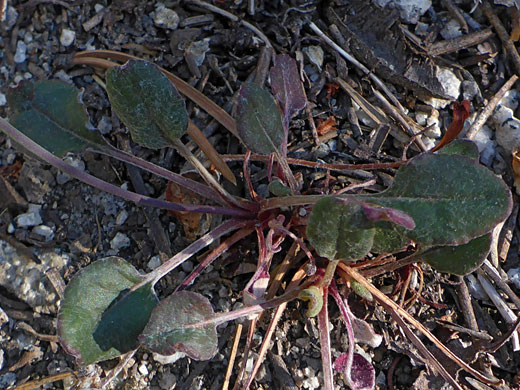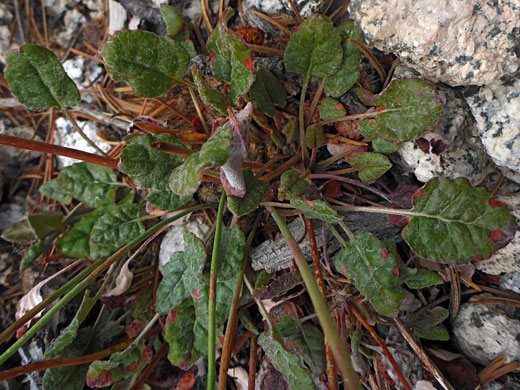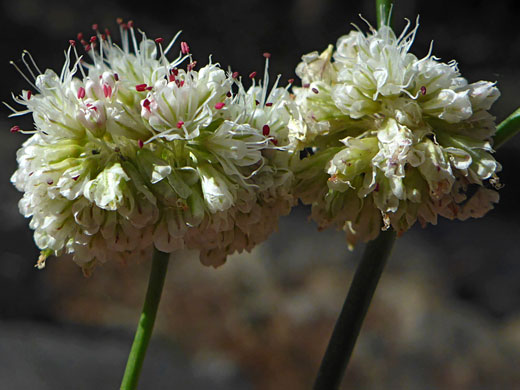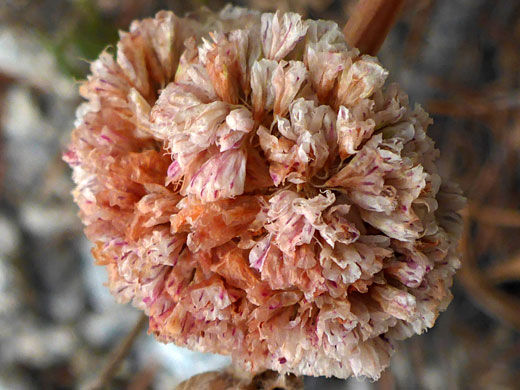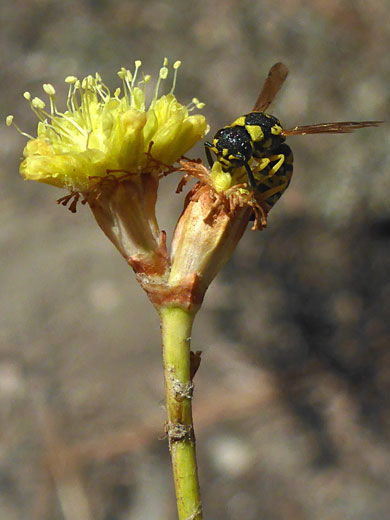Common name:
Naked wild buckwheat
Family:
Scientific name:
Eriogonum nudum
Main flower color:
Range:
The Pacific states, and west Nevada
Height:
Up to 5 feet (flower stalks); leaves are less than 6 inches
Habitat:
Generally gravelly or sandy locations; near sea level to 12,400 feet
Leaves:
Ovate, up to 2.3 inches long and 1.5 inches wide, generally tomentose underneath
Season:
May to October
Eriogonum nudum is named for the tall, slender, branched stems - which have no leaves, and are topped by small, spherical flower clusters - even though several other members of this large genus are similar in appearance. This is one of the most variable buckwheat species, and 13 varieties are recognized, differing in such aspects as hairiness, flower color, leaf dimensions, number of involucres in the flower clusters, and whether or not the stem is partially inflated. Many of the varieties inhabit distinct, non-overlapping areas.
Plants are generally low-growing, the leaf stems rising just a few inches above the ground, though the flower stalks reach heights of several feet. Stems and leaves may be completely hairless, or covered by either long or short (tomentose) hairs. Upper and lower leaf surfaces are often different in hairiness, accounting for some of the varieties. Stems may be inflated below the nodes, but are usually not. Leaves form basal rosettes.
Flower color can be light pink, darker pink, yellow or white (most common), and the flowers may be hairy or hairless.
Plants are generally low-growing, the leaf stems rising just a few inches above the ground, though the flower stalks reach heights of several feet. Stems and leaves may be completely hairless, or covered by either long or short (tomentose) hairs. Upper and lower leaf surfaces are often different in hairiness, accounting for some of the varieties. Stems may be inflated below the nodes, but are usually not. Leaves form basal rosettes.
Flower color can be light pink, darker pink, yellow or white (most common), and the flowers may be hairy or hairless.
All Contents © Copyright The American Southwest | Comments and Questions | Contribute | Site Map
